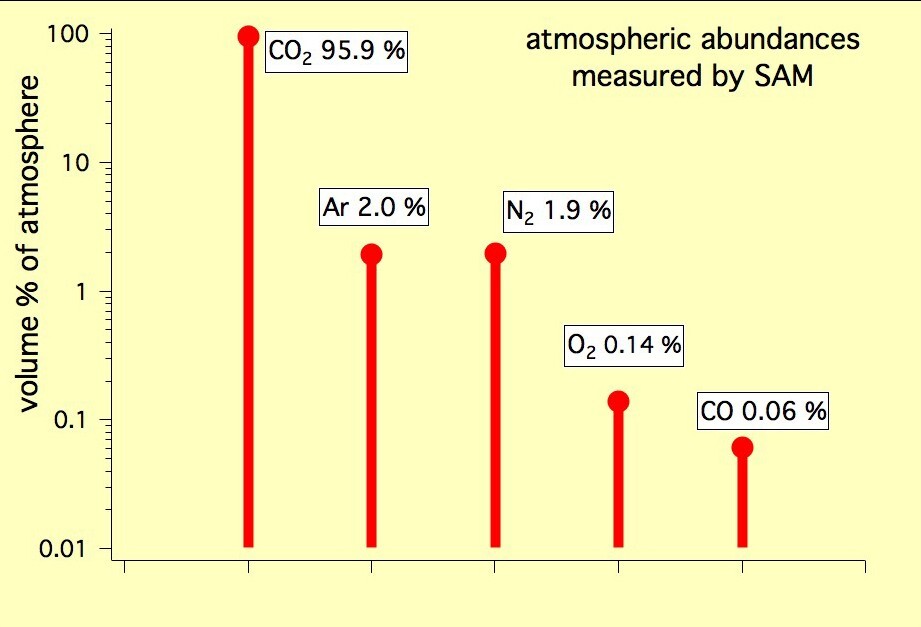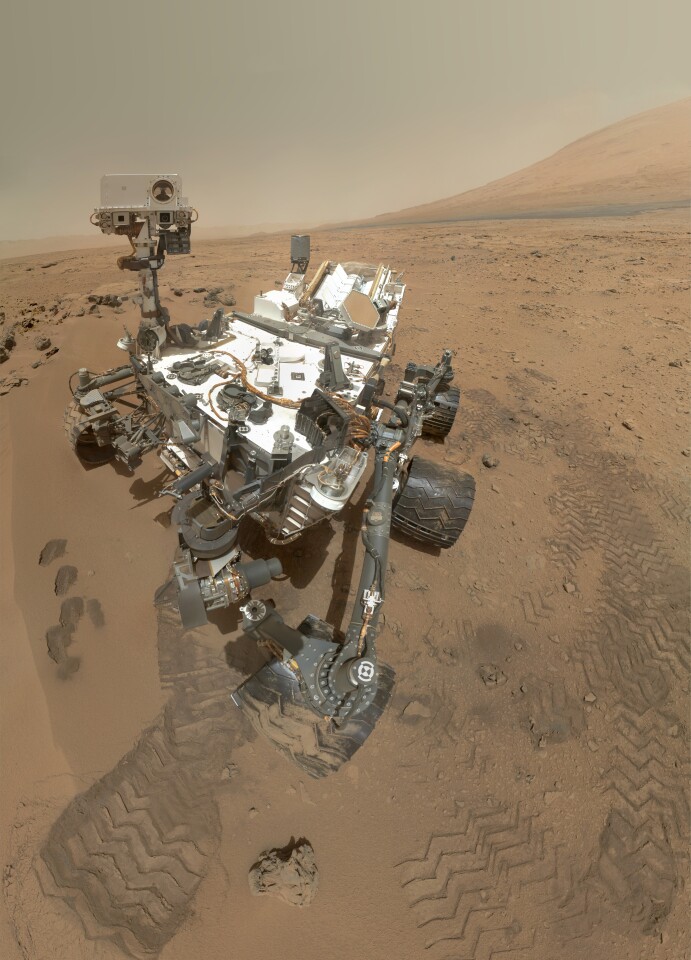NASA’s Curiosity rover has taken a whiff of Martian air at the "Rocknest" site in Gale Crater. The robot explorer's Sample Analysis at Mars (SAM) instruments are now being used to measure the constituent elements of the atmosphere and their isotopes with the aim of providing insights into the history of the Red Planet and its chances of having once supported life.
The most notable thing about the Martian atmosphere is that there isn't that much of it. It’s 100 times thinner than Earth and composed of an unbreathable mixture of 95.9 percent carbon dioxide, two percent each of argon and 1.9 percent nitrogen with traces of oxygen, carbon monoxide and other elements. What’s interesting about the atmosphere is not its elements so much as their isotopes. That is, how heavy they are. It’s the isotopes that tell the real story.

The presence of so much argon with so many heavy isotopes indicates that Mars may have had a heavier atmosphere in the the distant past, but most of it was lost with the lighter isotopes blowing off into interplanetary space. This left behind relatively heavy isotopes of argon and carbon. If this is the case, then the argument for a once-watery Mars becomes stronger.
An equally important find is methane in the Martian atmosphere – or rather, the lack of it. The Tunable Laser Spectrometer (TLS) in SAM is the most sensitive atmosphere-sniffing instrument ever sent to Mars, but it has sent back indications that the planet’s air contains less than a few parts per billion of methane or even none at all. Since methane on Earth is produced by biological as well as non-biological processes, this rules out what would have been one indicator of life still being present on Mars.

"Methane is clearly not an abundant gas at the Gale Crater site, if it is there at all. At this point in the mission we're just excited to be searching for it," said SAM TLS lead Chris Webster of NASA's Jet Propulsion Laboratory (JPL) in Pasadena, California. "While we determine upper limits on low values, atmospheric variability in the Martian atmosphere could yet hold surprises for us."
At the moment, Curiosity's SAM laboratory analyzes air samples with two methods. The first is a mass spectrometer, which is used to study the full range of atmospheric gases and the other is the TLS, which focuses on carbon dioxide and methane. A third instrument that separates and identifies gases (called agas chromatograph) has yet to be used.
Say cheese

Another task that Curiosity recently carried out was to snap a high-definition self-portrait. This was more than just an attempt to take a striking image – these self-portraits provide scientists and engineers with a chronicle of Curiosity's condition as it carries out its two-year mission.
Next on SAM’s agenda will be to study its first solid sample with an emphasis on seeking water-bearing minerals and carbonates.
Ed's update
Thanks to all the readers who have questioned how this can be a self-portrait photo of the Curiosity Rover when no part of the vehicle appears to be holding the camera. The answer is that the image is actually a composite (or stitch) of 55 high resolution photographs taken with the Rover's Mars Hand Lens Imager (MAHLI). MAHLI is the only one of the Rover's cameras mounted on the end of a robotic arm. The arm holding the camera has been obscured in the process of creating the composite. The process also accounts for the somewhat warped perspective.Source: NASA













